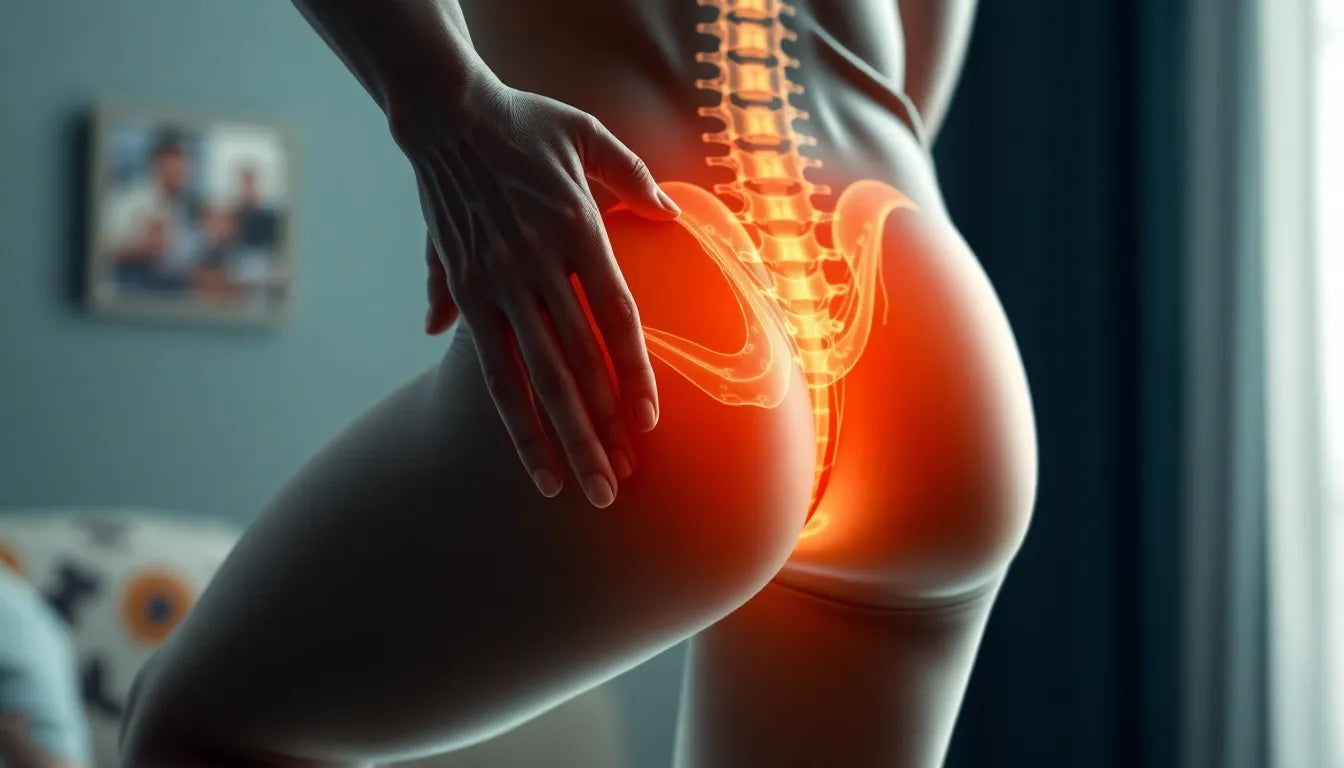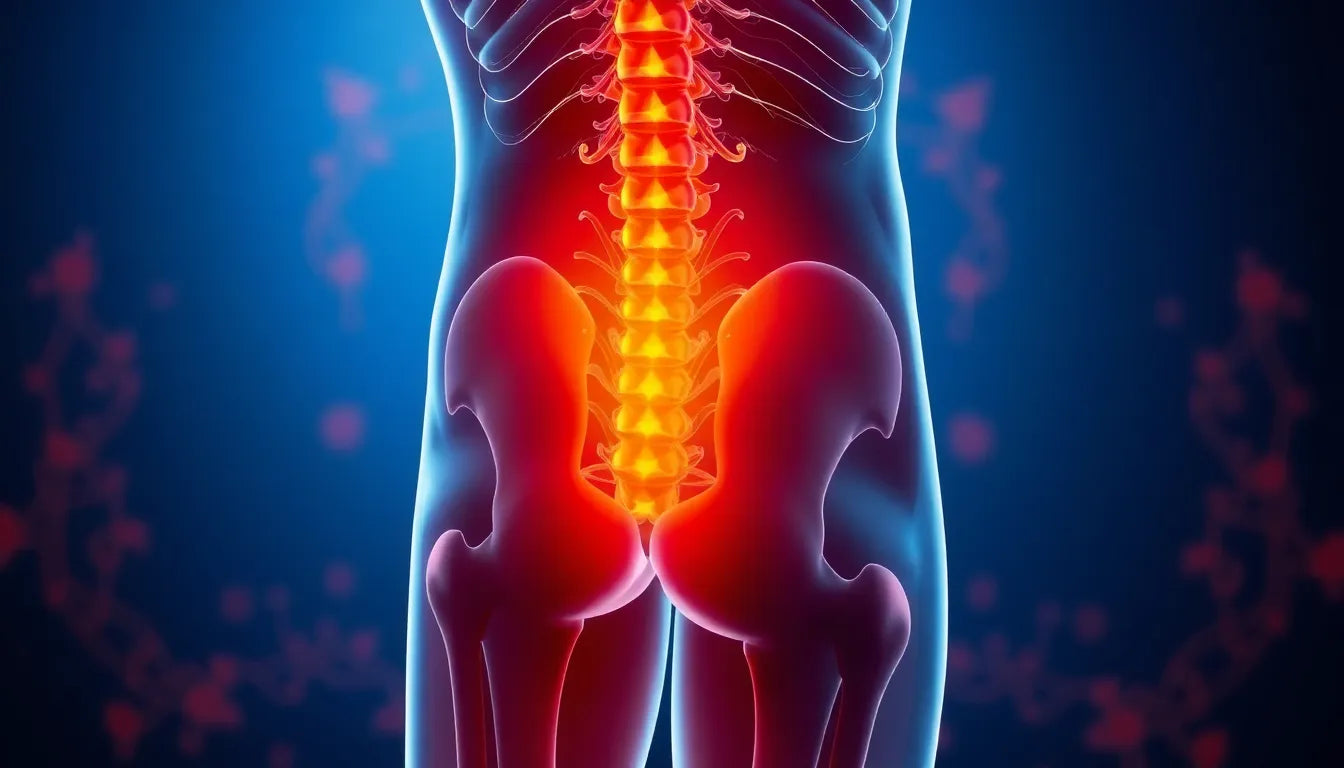Back pain is a common ailment that affects millions of people worldwide, often disrupting daily activities and diminishing quality of life. Among the many causes of back pain, spinal disc issues such as herniated and bulging discs are frequently misunderstood and misdiagnosed. Understanding the difference between these two conditions is crucial for effective management and treatment, as each presents unique challenges and requires different approaches.
anatomy of the spine: understanding spinal discs
The spine is a complex structure composed of bones, muscles, ligaments, and intervertebral discs, all working together to provide support and flexibility to the body. Spinal discs, which are situated between the vertebrae, play a vital role in cushioning the spine and allowing for smooth movement. Each disc is made up of two main components: the annulus fibrosus and the nucleus pulposus.
The annulus fibrosus is the tough, outer layer of the disc, designed to protect the softer inner core known as the nucleus pulposus. This gel-like center acts as a shock absorber, distributing pressure evenly across the spine. When these components are compromised, it can lead to conditions such as bulging or herniated discs, each with distinct characteristics and implications for spinal health.
In the case of a bulging disc, the annulus fibrosus extends outward, typically affecting a larger portion of the disc's circumference. Despite this outward extension, the nucleus pulposus remains contained within the disc. On the other hand, a herniated disc occurs when a crack or tear in the annulus fibrosus allows the nucleus pulposus to protrude or leak out, potentially compressing nearby nerves and causing significant pain and discomfort.
By gaining a deeper understanding of the spine's anatomy and the differences between herniated and bulging discs, individuals can better navigate their symptoms and seek appropriate treatment options. This knowledge not only empowers patients but also aids healthcare professionals in diagnosing and managing these conditions more effectively.
defining bulging and herniated discs
When discussing spinal disc conditions, it's essential to understand the distinct characteristics that differentiate a bulging disc from a herniated disc. A bulging disc occurs when the annulus fibrosus, the tough outer layer of the disc, extends outward. This outward extension often affects a larger portion of the disc's circumference, but the critical point to note is that the nucleus pulposus, the inner gel-like core, remains contained within the disc. This condition is relatively common and may not always result in noticeable symptoms unless the bulge compresses a nearby nerve.
In contrast, a herniated disc is characterized by a crack or tear in the annulus fibrosus. This damage allows the nucleus pulposus to protrude or leak out of the disc. The herniation often results in the material pressing against spinal nerves, leading to significant pain and discomfort. The potential for nerve compression is higher with herniated discs, which can cause more pronounced symptoms compared to bulging discs.
severity and symptoms comparison
The severity and symptoms associated with bulging and herniated discs can vary significantly, impacting the individual's quality of life and treatment approach. Bulging discs are generally less severe and often asymptomatic. However, if a bulging disc exerts pressure on a nerve, it can lead to symptoms such as localized pain, numbness, or weakness. These symptoms are typically milder compared to those associated with herniated discs.
Herniated discs, on the other hand, are more likely to cause intense and acute pain. The protrusion of the nucleus pulposus can irritate or compress nerve roots, leading to neurological symptoms. Individuals with a herniated disc may experience radiating pain, numbness, tingling, and muscle weakness, depending on the location of the affected disc in the spine. These symptoms can significantly impact daily activities and may require more aggressive treatment.
diagnosis and imaging
Accurate diagnosis of bulging and herniated discs is crucial for effective treatment. While symptoms can provide clues, they are often insufficient to distinguish between the two conditions definitively. Magnetic Resonance Imaging (MRI) is the primary diagnostic tool used to differentiate between bulging and herniated discs. MRI scans provide detailed images of the spine, allowing healthcare professionals to assess the extent of the disc damage and identify any nerve compression.
It's important to note that not all bulging or herniated discs cause pain. Incidental findings of disc abnormalities are common, especially as individuals age. Therefore, a comprehensive evaluation that includes imaging and clinical assessment is essential to determine the appropriate course of action for managing these conditions.
comparative overview
| Aspect | Bulging Disc | Herniated Disc |
|---|---|---|
| Definition | Outer disc bulges outward, nucleus remains contained | Nucleus leaks through tear in outer layer |
| Area affected | Typically involves a broader portion of the disc | Usually affects a smaller, localized disc area |
| Severity | Often mild or asymptomatic | More likely to cause severe or acute symptoms |
| Nerve irritation | Less likely; disc better contained | More likely; extruded material irritating nerves |
| Pain | May cause pain if nerve compressed, but often less | More likely to cause intense, radiating pain |
Understanding these differences is key to managing spinal disc conditions effectively. By recognizing the unique characteristics of bulging and herniated discs, individuals can better navigate their symptoms and seek appropriate medical intervention.
prevalence and causes of disc issues
Disc-related conditions, such as herniated and bulging discs, are commonly associated with degenerative disc disease. This is a natural part of aging, where the spinal discs gradually lose hydration and elasticity, making them more susceptible to damage. Factors such as repetitive stress, injury, and everyday wear-and-tear can exacerbate these conditions. Research indicates that nearly all adults over the age of 40 exhibit some degree of disc degeneration, although not all will experience symptoms.
The development of these conditions can also be influenced by lifestyle choices. Poor posture, lack of exercise, and obesity can increase the strain on the spine, accelerating the degeneration process. Understanding these causes is crucial for both prevention and management of disc-related issues.
angles and perspectives on disc issues
To simplify the complex anatomy of spinal discs, analogies like the "jelly donut" and "air out of a tire" are often used. In the "jelly donut" analogy, a bulging disc is likened to the jelly pushing outward but staying inside, while a herniated disc is akin to the jelly leaking out. The "air out of a tire" analogy describes how a bulging disc involves the outer layer extending outward, similar to a tire losing air but not rupturing.
The severity of symptoms largely depends on whether and how much the disc material compresses nearby nerves. This nerve compression is a critical factor in determining the intensity of pain and other symptoms. Despite the overlap in symptoms, MRI remains essential for an accurate diagnosis, as it provides a clear image of the disc and any potential nerve involvement.
common misconceptions about disc conditions
There are several misconceptions surrounding disc conditions. One of the most common is the interchangeable use of terms like "slipped disc" to describe both bulging and herniated discs, which can lead to confusion. It's also a misconception that all disc issues result in pain. Many people have disc abnormalities without experiencing any symptoms, highlighting the importance of a thorough clinical evaluation alongside imaging.
conclusion: managing disc conditions
Managing disc conditions often involves a combination of non-surgical interventions and lifestyle modifications. Physical therapy can help strengthen the muscles supporting the spine, reducing strain on the discs. Medications may be prescribed to manage pain and inflammation. Additionally, incorporating ergonomic products, such as supportive chairs and proper footwear, can alleviate symptoms and prevent further injury. In severe cases, surgical options may be considered to relieve nerve compression and restore function.
frequently asked questions
What is the main difference between a herniated and a bulging disc?
The main difference lies in the extent of the disc's damage. In a bulging disc, the outer layer extends outward, while in a herniated disc, the inner gel-like core protrudes through a tear in the outer layer, increasing the likelihood of nerve compression.
Can a bulging disc turn into a herniated disc?
Yes, a bulging disc can progress to a herniated disc if not managed properly. Factors such as continued stress and lack of treatment can lead to further damage.
How are these conditions treated?
Treatment options include physical therapy, medications, and lifestyle changes. In severe cases, surgical intervention may be necessary to alleviate symptoms and prevent further damage.
Is surgery always required for herniated discs?
No, surgery is not always required. Many cases of herniated discs are effectively managed with non-surgical treatments. Surgery is typically considered when conservative measures fail to relieve symptoms.
How can I prevent disc problems?
Preventive measures include regular exercise, maintaining a healthy weight, and practicing good posture. These habits help reduce the risk of disc degeneration and associated complications.
Sources
- Penn Medicine. "Herniated Disc vs. Bulging Disc: What's the Difference?"
- ADR Spine. "Bulging vs. Herniated Disc: Understanding the Difference."
- POPB. "Bulging vs. Herniated Disc: Key Differences."
- Fayaz Neurosurgery. "Bulging vs. Herniated Disc: What You Need to Know."
- Neurosurgeons of New Jersey. "Bulging Disc vs. Herniated Disc: Understanding the Differences."
- Cleveland Clinic. "Herniated Disk."
- Orlando Orthopaedic Center. "Bulging vs. Herniated Discs: What’s the Difference?"
- Neurosurgery One. "Bulging Disc vs. Herniated Disc: What Is the Difference?"























